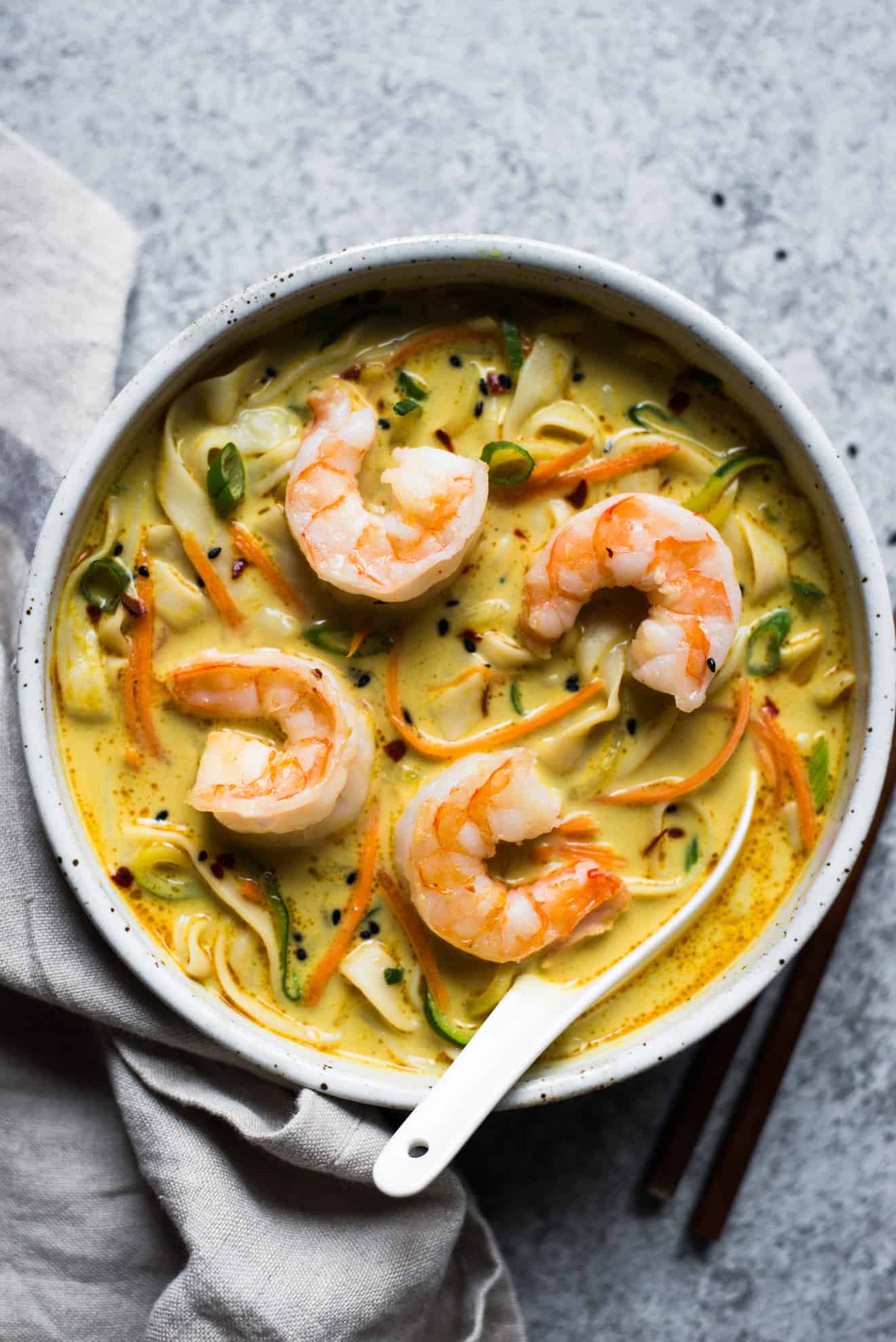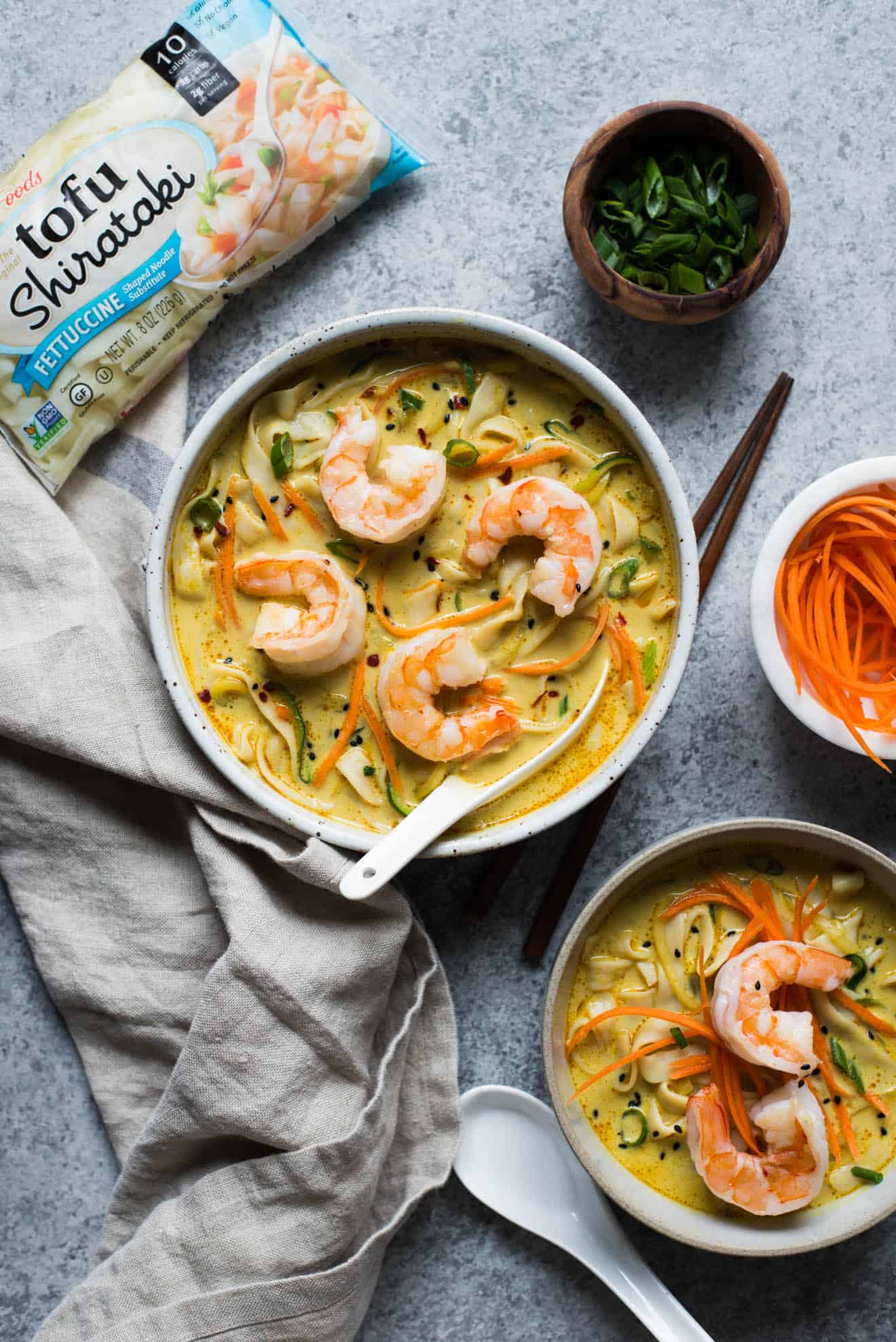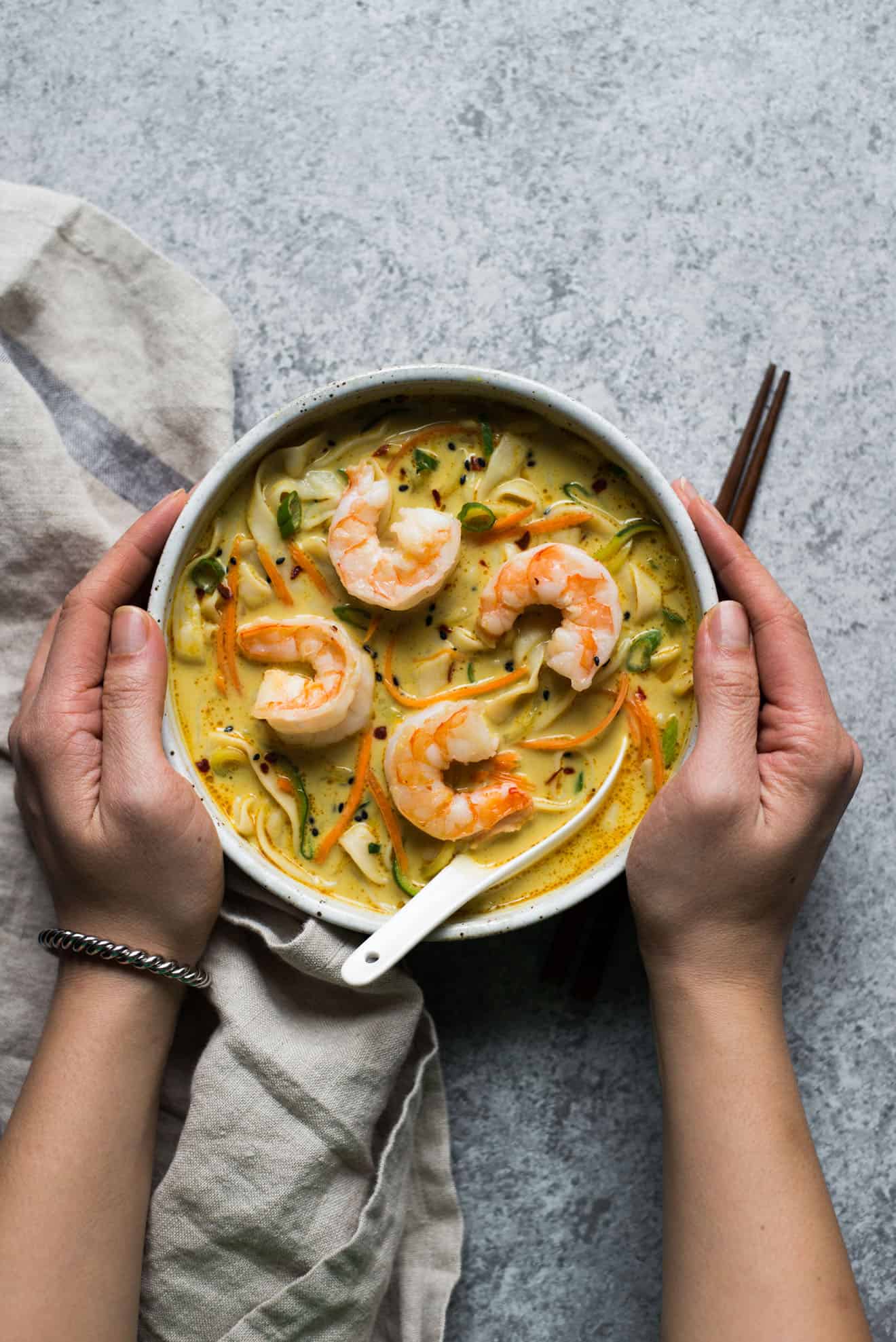I could drink this broth all day. As a matter of fact, I did. I get that it’s strange to be craving curry noodles in the mid-afternoon, but I found myself wanting a sip of this liquid gold at approximately 4:30pm last Thursday. Actually, it could have been 4:28pm, but you get the picture. On a cold, rainy day, or whenever I’m feeling uninspired in the kitchen, I can always rely on a good curried noodle soup to bring me a sense of comfort. It’s funny, I didn’t even realize that Asian-style cuisine is my favorite thing to cook until recently. I suppose it’s the gingery, bold flavors in dishes like these that remind me a lot of my childhood. For this dish, I am using House Food’s tofu shirataki noodles in the fettuccine shape. The noodles are made out of tofu and yam flour, and they’re very low in calories and carbohydrates (about 20 calories and 6 grams of carbs per package). Because I’m using full-fat coconut milk in my soup broth, I want to balance out the dish with lighter noodles so that it doesn’t get overly indulgent. The noodles cook very easily—just take them out of the package, give everything a rinse under cold water and pop it into boiling broth for a few minutes. That’s it! When you make these noodles, just promise me one thing: make sure to get your slurp on. That’s how we do it around here. 😉
MASTERING MY MISTAKES / COOKING NOTES
Using full-fat coconut milk: I don’t always use regular (canned) coconut milk in my cooking because of the high fat content, but it makes a huge difference in this recipe. The natural sweetness of regular coconut milk makes this noodle soup shine. If the fat content is an issue, feel free to substitute it with light coconut milk.Spiralizing zucchini: If you are spiralizing the zucchini to make the noodles, I have a few tips for you. (1) Right after you finish spiralizing the zucchini, gather up the noodles and give everything several rough chops (5 to 6). Whenever you spiralize zucchini, you’ll always get a lot of noodles that are obnoxiously long. I’ve tried many different ways to deal with this issue, and the best method I found is to chop up the zucchini noodles once they’re spiralized. (2) After you spiralize the zucchini, you’ll be left with an awkward central core that looks a like mushroom with a long stem. I usually chop up that core into pieces and add it to my dishes. (3) By the way, if you don’t have a spiralizer, you can make zucchini noodles with a julienne peeler or zucchini ribbons with a regular vegetable peeler.Preparing the lemongrass: I’m using fresh lemongrass here for extra flavor. It’s an optional ingredient in the recipe. If you have never cooked with fresh lemongrass before, here’s what you want to do. Peel the outer, tougher layers of the lemongrass. I usually tear away 2 to 4 layers, depending on the thickness of a particular stalk. Then, cut off about 3/4 to 1 inch off the bottom, as well as the dried leaves at the top (about 4 to 5 inches from the top). If I am using the lemongrass for a paste or sauce, I will grate the lemongrass stalk. If I am using the lemongrass to flavor a soup, I will just slice it into 3 sections and hit each piece with my kitchen mallet. This bruises the lemongrass and allows it to release its flavors. Then, I add the lemongrass directly into the broth for cooking and dig them out right before serving.
Disclosure: This recipe is sponsored by House Foods. Thank you for supporting the brands that keep me inspired in the kitchen! To learn more about House Foods products and recipes, check them out at their website or follow them on Facebook!



